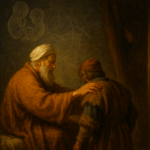
Isaac and Rebecca: Deception or Wigner’s Friend Paradox?
Synopsis The narrative of the “stolen blessings” in Parashat Toldot presents a profound moral paradox: How could Rebecca, a righteous prophetess, and Jacob, the archetype

Synopsis The narrative of the “stolen blessings” in Parashat Toldot presents a profound moral paradox: How could Rebecca, a righteous prophetess, and Jacob, the archetype
Today is Hoshana Rabbah, the last day of Chol HaMoed Sukkot. Six years ago, I wrote “Chol HaMoed—Days in Superposition,” exploring how these intermediate days
“Ein simchah ke’hatarat ha-sfeikot”—there is no joy like the resolution of doubt. On the eve of Rosh HaShanah, our sages describe a cosmic pause: the
By Alexander Poltorak The Tree of Life and the Tree of Knowledge as Metaphors for the Wave Function and Measurement Summary This essay proposes a
And it came to pass, when he was come near to enter into Egypt, that he said unto Sarai his wife: “Behold now, I know
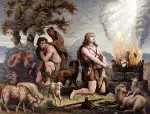
In his commentary on this week’s Torah Portion, Yitro, Rabbi Chayim Vital, writing in the name of his teacher, the Ari-zal, states that Abel was
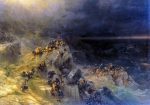
Noah’s flood was a cataclysmic event with no parallels in recorded history. All of humanity (along with flora and fauna)—except for Noah and his family
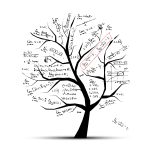
To Mendel Almost three years ago, in December of 2019, I posted an essay, “The Tree of Knowledge as a Metaphor for Superposition of States

The collapse of the wave function is the process of revealing hidden possibilities. Reducing uncertainty reveals information. Until the wave function collapse, the system is
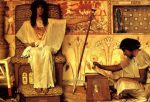
And afterwards she bore a daughter, and called her name Dinah. (Genesis 30:21) In my previous essay, “The Conflict Between Joseph And His Brothers—A Gender

And these are the chronicles of Isaac… (Genesis 25:19) So Esau went unto Ishmael, and took unto the wives that he had Mahalath the daughter

A light shalt thou make to the ark…with lower, second, and third stories shalt thou make it. (Genesis 6:16) We mentioned in the previous posts
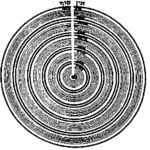
In the previous post “Physics of Tzimtzum I—The Quantum Leap”, we gave a general overview of the mystical doctrine of tzimtzum—the cornerstone of Lurianic Kabbalah.

In the beginning, G‑d created the heaven and the earth…[1] (Genesis 1:1) Classical biblical commentators have given the first words of the Torah many
It is related that on the day that Rabbi Yehuda HaNasi died, the Sages decreed a fast, and begged for divine mercy so that he
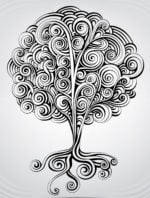
As we discussed in the earlier post, The Tree of Knowledge as a Metaphor for Superposition of States and Heisenberg’s Uncertainty Principle, the Heisenberg uncertainty
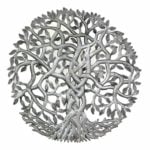
As always in science, every answered question breeds new questions. Now that we understand that the Tree of Life and the Tree of Knowledge are

And out of the ground made the Lord G‑d to grow every tree that is pleasant to the sight, and good for food; and the
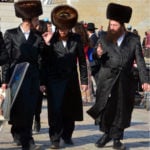
Today is Chol Hamo’ed Sukkot – the intermediate days between the first and the last days of the holiday of Sukkot. These days are not

Meditations on the Maaseh Merkavah – IV This is the fourth and the final installment in the series of posts related to Ezekiel’s prophesy, Ma’aseh
(A popular summary of the paper “Towards Futuristic Interpretation of Quantum Mechanics” by Alexander Poltorak being currently prepared for publication) Quantum mechanics (QM) is one

And all the tithe of the herd or the flock, whatsoever passeth under the rod, the tenth shall be holy unto the Lord.” (Leviticus 27:32)

And whosoever lieth carnally with a woman, that is a bondmaid, designated for a man, and not at all redeemed, nor was freedom given her;
Welcome to the premiere of our first film, Quantum Torah. You can watch the film here: Don’t forget to subscribe to my channel here:

I am excited to announce that the premiere of our film “Quantum Torah” is scheduled for this Friday, March 1st. You can see the trailer
Coming soon to a theater near you. Watch a trailer:
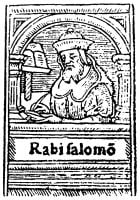
And G‑d saw all that He had made, and behold it was very good, and it was evening and it was morning, the sixth day.
The Torah portion, Re’eh, talks about the Sabbatical Year—in Hebrew, Shemitah—the Seventh year. When the Sabbatical year comes, all loans are forgiven, and Jewish servants
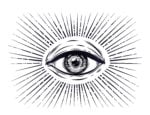
The Torah portion Re’eh, begins with the verse: Behold, I set before you this day a blessing and a curse. (Deut. 11:26) The first word
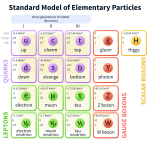
Ye are standing this day all of you before the Lord your G‑d: your heads, your tribes, your elders, and your officers, even all the
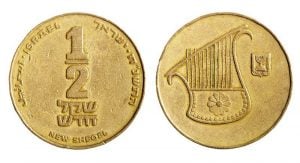
This they shall give, everyone who goes through the counting: half a shekel according to the holy shekel. Twenty gerahs equal one shekel; half of

As I wrote in my post, Schrödinger Menorah: Burning And Not Burning, the Lubavitcher Rebbe, Rabbi Menachem Mendel Schneerson, explains the miracle of Chanukah as

The miracle of Chanukah revolves around a single-day-supply of olive oil burning for eight days during the rededication of the Holy Temple in Jerusalem (Bet

According to the Saadia Gaon, these two Torah portions – Nitzavim and Vayelech – are really one portion, which sometimes is split into two. In the

There is a dispute in the Talmud as to when the world was created. According to Rabbi Eliezer, the world was created in the month
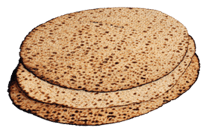
There were men who were ritually unclean [because of contact with] a dead person, and therefore could not make the Passover sacrifice on that day.

The blessings and the admonitions of Bechukotai (Leviticus 26:3–27:34) are viewed as the result of entanglement and disentanglement with G‑d respectively.
When G‑d created the first humans, Adam and Eve (Chavah), He created them as one. And G‑d created man in His own image, in the
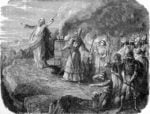
Balak the son of Zippor saw all that Israel had done to the Amorites. Moab became terrified of the people, for they were numerous, and
What came first, the Schrödinger cat or the fig of Rabbi Akiva? You be the judge. Today we present a guest post by Rabbi Dr. David
Today is Yud Tes Kislev — Rosh HaShanah of Chasidut. Today I received two gifts, which I’d like to share. Lately, while learning Samach Vov,
A man once came to a rabbi with said news – his cat just died. Rabbi politely expressed his sympathy to the owner of the

In my essay “Secrets of the Talking Ass,” I discussed the phenomenon of Bein HaShmashot (twilight or dusk), which is neither day, nor night, nor
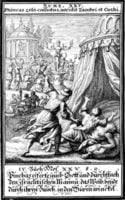
A strange episode at the end of the last Torah portion, Balak, where Phinehas (Pinchas) slain a Jewish prince caught in the act with a
And G‑d opened the mouth of the ass, and she said to Bilam: “What have I done to you, that you have struck me these
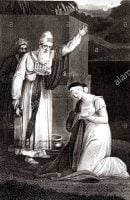
The story of Sotah, a suspected adulteress, is very troubling on the first blush. Why would a woman be subjected to such humiliation? The Lubavitcher
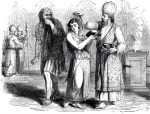
In quantum mechanics, the state of a physical system is described by the so-called wave function (or the “wavefunction”). All attempts by Schrödinger, who first

Today is Rosh Chodesh Adar Bet – the New Moon and the beginning of the second month of Adar. If we ever to have a month
Reading the Haftorah this Shabbat brought to mind scenes from the 2004 Republican National Convention in Madison Square Garden in New York City where attendees where
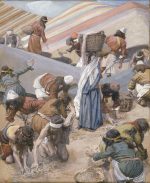
And the house of Israel called the name thereof manna; and it was like coriander seed, white; and the taste of it was like wafers
Do you like riddles? Here is a riddle – what do these two figures represent in the context of Exodus? No Idea? How about

As we have discussed in the post, It’s the time, stupid, Pharaoh never got the message that it’s all about mastery of time. To make

Give me the Machpelah (double) Cave Genesis 23:9 The first legal acquisition of land in Israel takes place in this Torah portion, Chayei Sarah, when Abraham
By the mouth of two witnesses, or three witnesses, shall the one liable to death be put to death; he shall not be put to
Massei — Bamidbar-Numbers 35 Whoever kills a person, based on the testimony of witnesses, he shall slay the murderer. A single witness may not testify
B’reshit bara Elokim et hashamaim v’et haaretz… In the beginning, G‑d created heaven and earth… Alternative translation: With two beginnings G‑d created heaven and earth…
On the Age of the Universe in the Many-Worlds Interpretation of Quantum Mechanics[*] Alexander Poltorak Abstract The present paper addresses the apparent discrepancy

In the Torah portion Tazriah (Leviticus 13), the Schrödinger cat[1] gets leprosy. Well, it’s not really leprosy, it’s a mysterious supernatural disease called tzara’as, nowadays translated